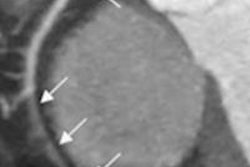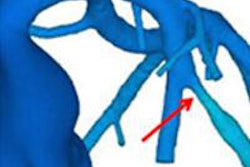Tuesday, December 3 | 10:40 a.m.-10:50 a.m. | SSG14-02 | Room S403B
One of the hardest jobs in diagnostic radiology is distinguishing benign from malignant findings. So a new project that harnesses dual-energy CT (DECT) to analyze water, lipid, and protein content of breast tissue and identify malignancies with high accuracy is welcome news.Researchers from the University of California, Irvine (UCI) and Philips Research scanned 40 postmortem breasts using a flat-panel dual-kVp conebeam CT system at 50 kVp and 120 kVp. They then performed tissue decomposition into water, lipid, and protein contents, and analyzed the breast tissue itself via chemical analysis for comparison with the CT results.
The dual-energy breast tissue decomposition showed strong correlation -- within 3.6% -- with the chemical analysis, suggesting that the three materials can be accurately distinguished at CT.
"With the current breast cancer screening protocol, the positive predictive value from mammography may be as low as 20%, which leads to a large number of benign findings in the biopsy results," wrote co-investigator Huanjun Ding, PhD, an assistant project scientist at UCI.
"Our study proposed to characterize lesions by their chemical compositions, in terms of water, lipid, and protein, using dual-energy CT," he continued. "The compositional information obtained through dual-energy imaging may be helpful to differentiate malignant tumors from normal tissue, which will effectively improve the predictive power of diagnostic breast imaging."




















